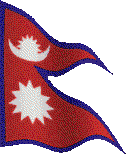 Nepal is the country of captivating mountains. Amongst the world’s top 10 mountains, eight are in Nepal including the majestic Mount Everest – the highest peak in the world. It is estimated that every year about 70 thousands people from different parts of the world come to visit the mystique beauty of mountains cape. Some of them make their expeditions to climb high peaks.
Nepal is the country of captivating mountains. Amongst the world’s top 10 mountains, eight are in Nepal including the majestic Mount Everest – the highest peak in the world. It is estimated that every year about 70 thousands people from different parts of the world come to visit the mystique beauty of mountains cape. Some of them make their expeditions to climb high peaks.Along with the exciting discovery of ecstasy of delight produced by enchanting beauty of Himalayas, most of the people suffer with high altitude mountain sickness too. It is due to the fact that they arrive from the low land. So here are some accounts which would be very much helpful for any enthusiastic pedestrian, explorer, climber, and hiker.
There are many ailments of sickness on high altitude viz., heat stroke, frost bite, blood clots, mental breakdown, etc. All these causes Aries by lack of oxygen. The typical symptoms of the climbers are headache, nausea and vomiting, and difficulty in vision.
Classification of Sickness of High Altitudes:
1. Acute Mountain Sickness: This sickness appears usually above 7-8000 feet after rapid ascent. The symptoms are the headache, dizziness, tiredness, drowsiness, chilliness, nausea, vomiting, yellow face in the beginning which is changed into redness (facial flushing), ringing in the ear (tinnitus), insomnia (lack of sleeping), etc. Sometimes retinal hemorrhages may also occur.
2. High Altitude Pulmonary Edema: It occurs above 3000 meters (9840 feet). The symptoms are in the form of fatigue, dry cough sometimes with bloody sputum, slight fever, etc.
3. high Altitude Cerebral Edema: This occurs at and above 1200 feet. The symptoms are in the form of increasing headache, rising sound in ears, visual hallucination, auditory hallucination, drowsiness, coma, and even death.
4. Chronic Mountain Sickness: It is also known as Monger’s disease. This occurs after long stay at high altitude. Symptoms are in the form of fatigue and redness in appearance. Death may occur from heart failure in prolong stay in high altitude.
5. High Altitude Retinal Hemorrhage: It occurs usually at and above 17,500 feet in some persons other than mountain people. Sometimes this hemorrhage can also be seen under fingernails. Epitaxis (nose bleeding) may occur in some person as well.
Preventive Measures and Treatment:
Most of the times, the sickness disappear when patients return to the low altitude or to the seal level. Mountain traveler should definitely carry a supply of oxygen. They should take adequate rest and sleep the day before travel. Food intake should be reduced. Alcohol and tobacco should be avoided. They should not climb hastily but should rest frequently because it takes time for acclimatization.










